A New Kind of “In-Between” for a Chinese Community Development
‘Ma’ is a Japanese word not easily translatable; it has no single English correlative. It is the purposeful pauses in speech which make words stand out, and the intervals of silence between the notes that make the music. Ma is the pure and essential void between all things that, far from emptiness, is rife with possibilities and gives all things greater meaning and utility. Quarry Park north of Hangzhou China proved to be a perfect testing ground for the burgeoning young cross-cultural design firm that would become office ma. Of course landscape architecture in a sense has always resided in the realm of ma—the in-between—while offering much more to the built environment than a backdrop of negative space.
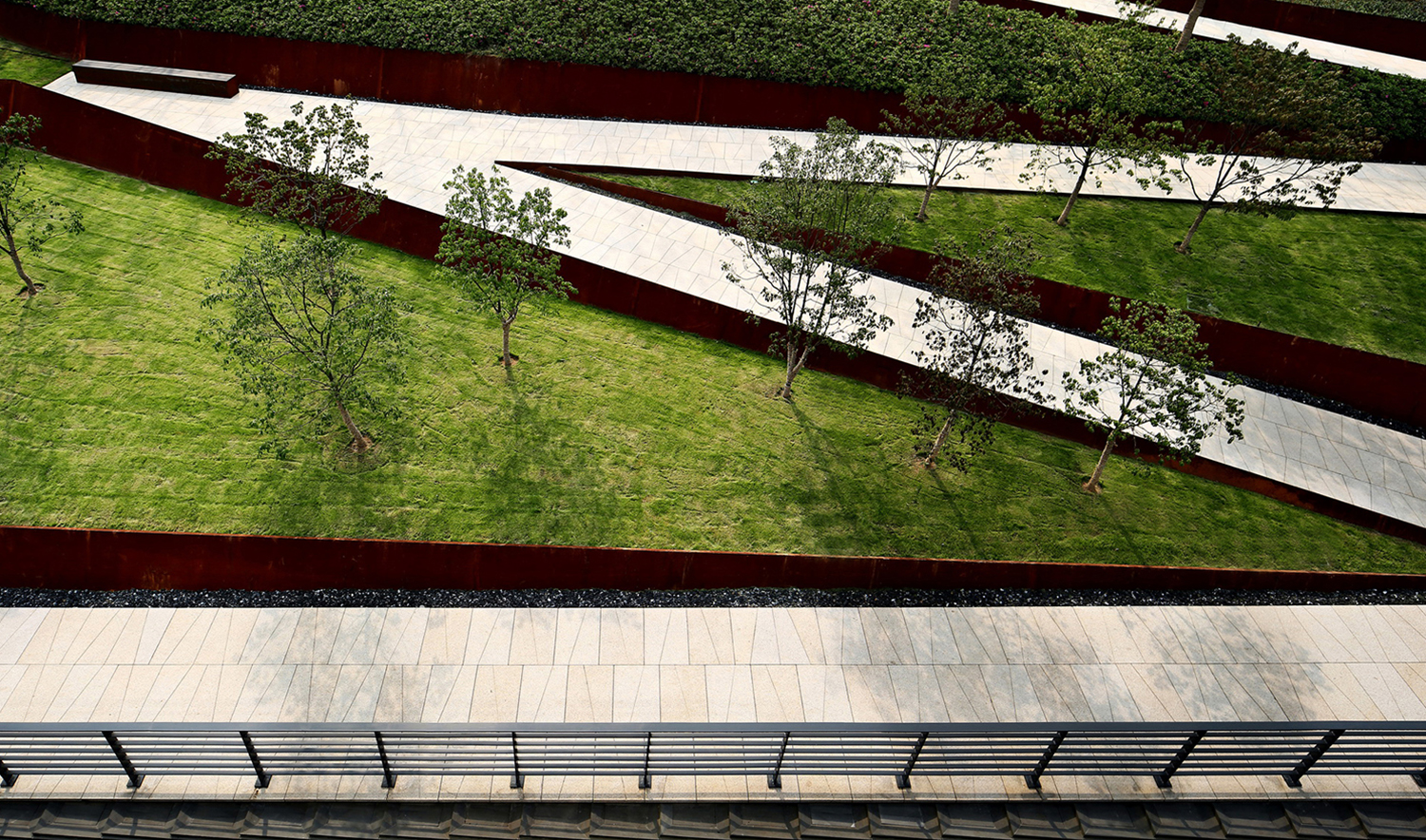
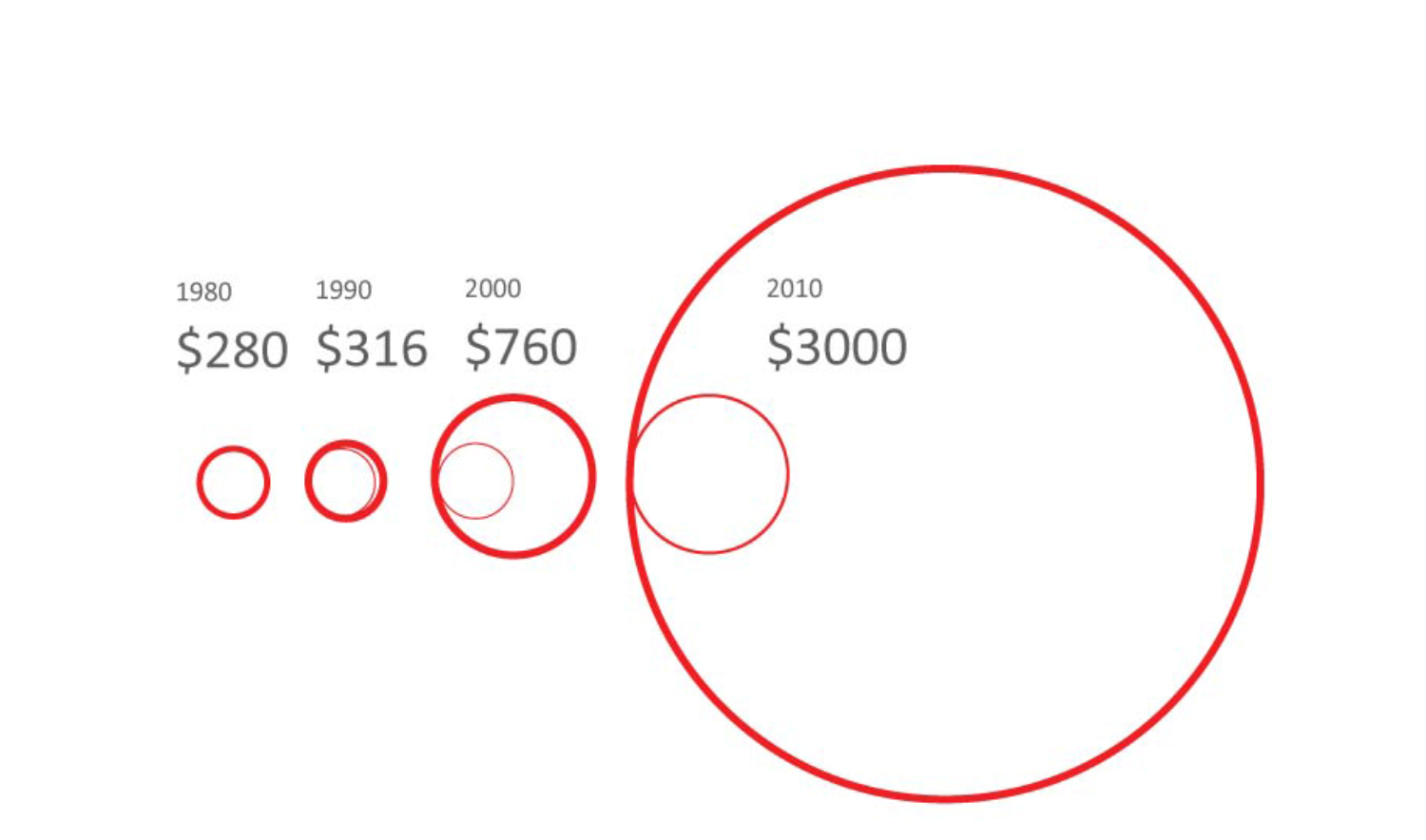
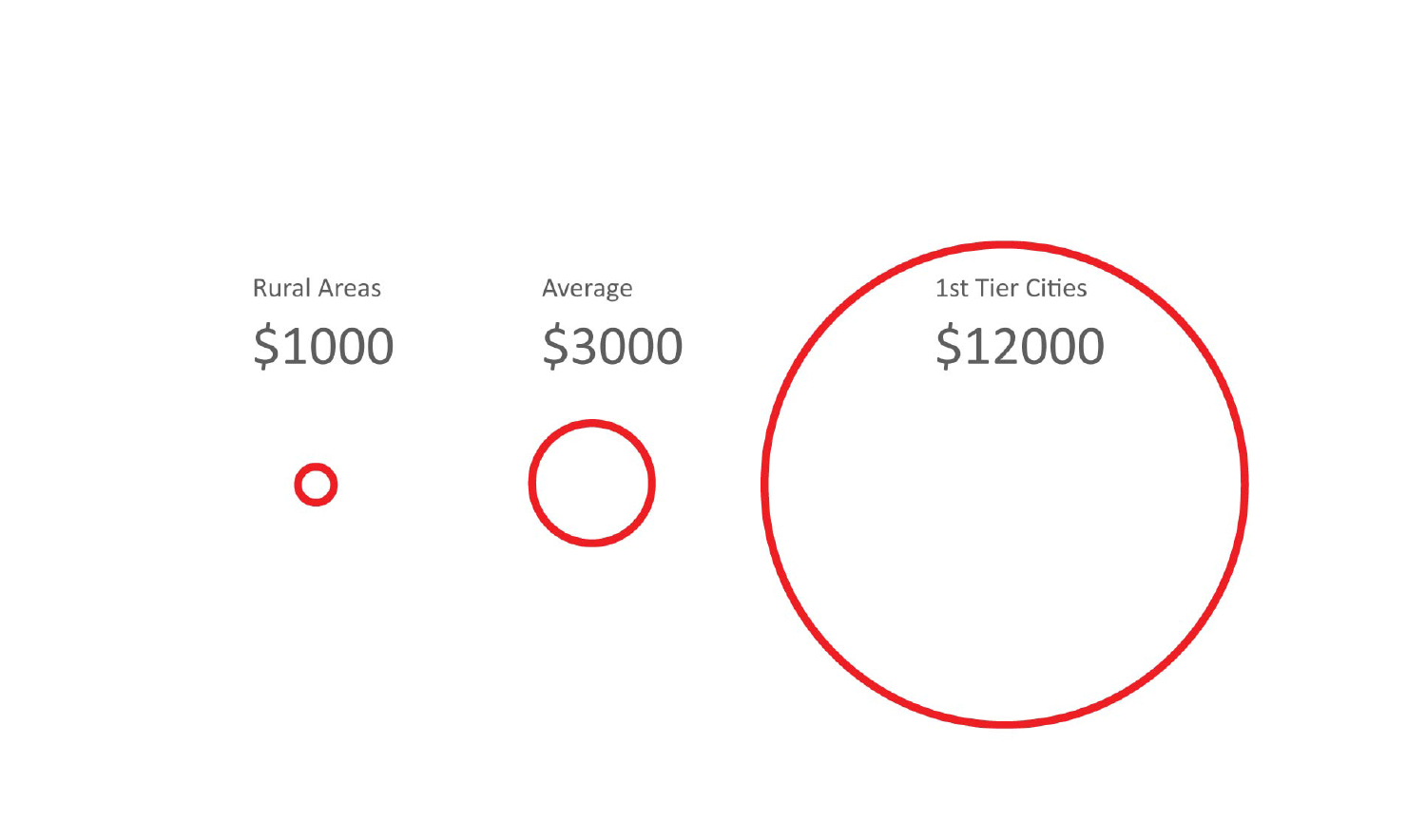

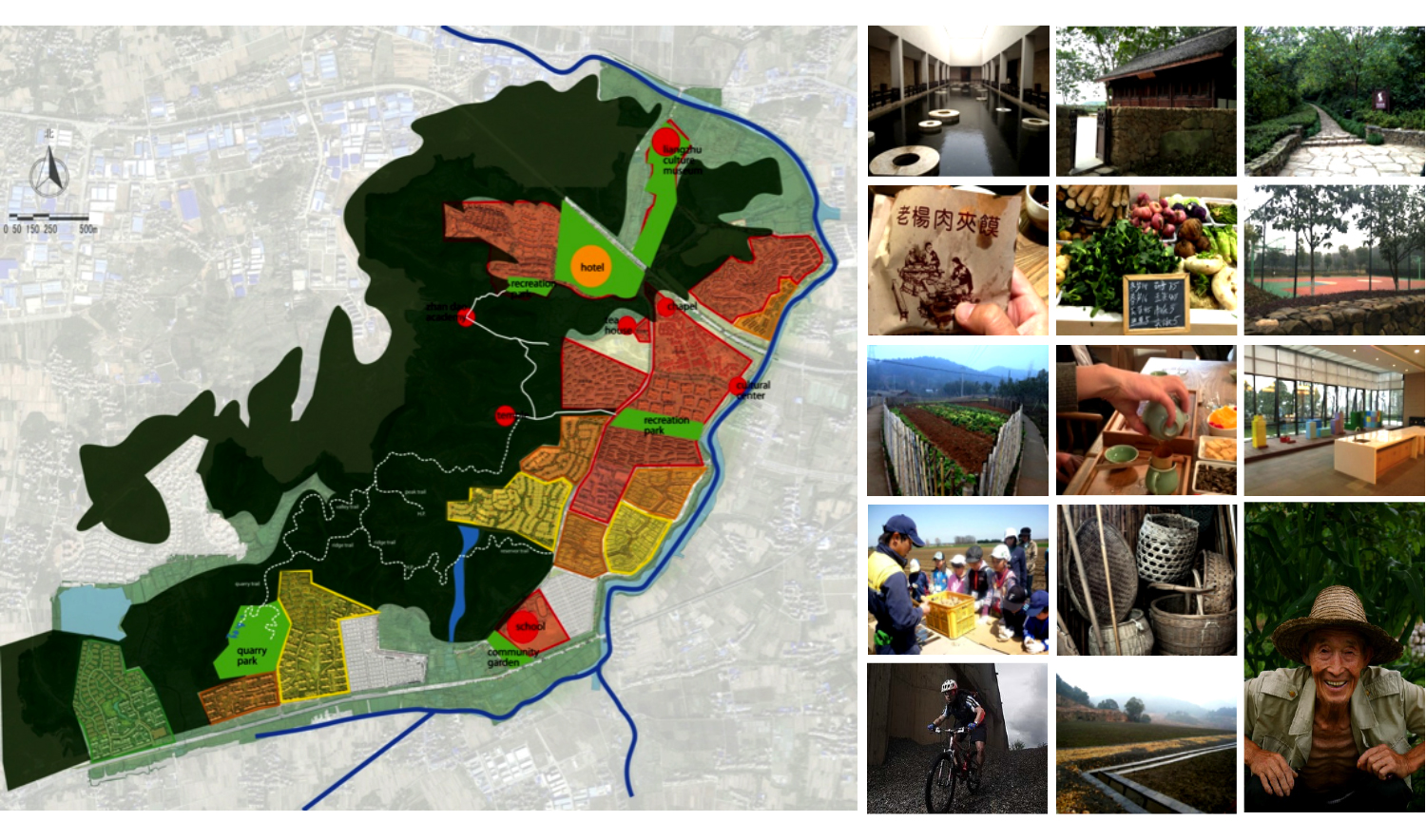
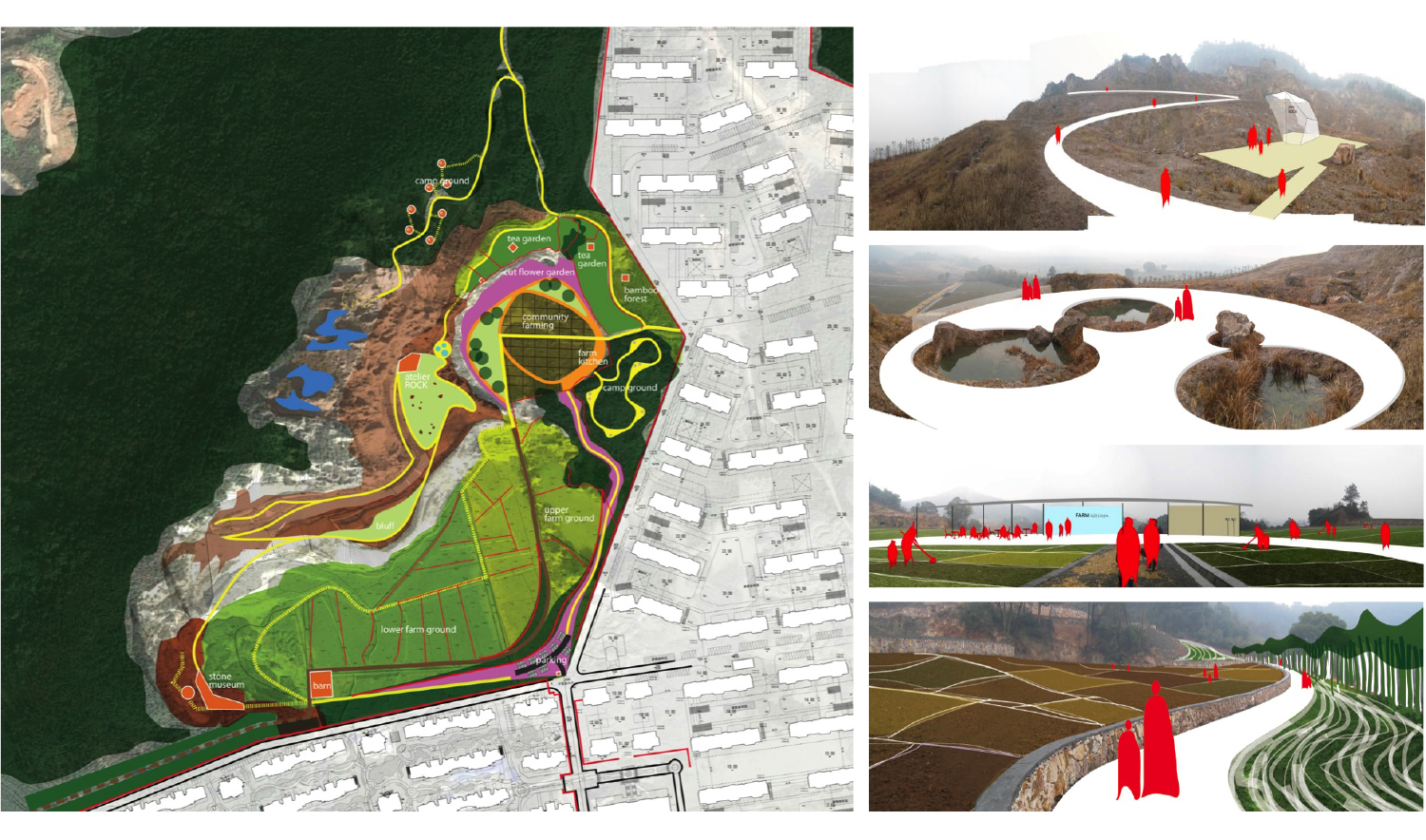

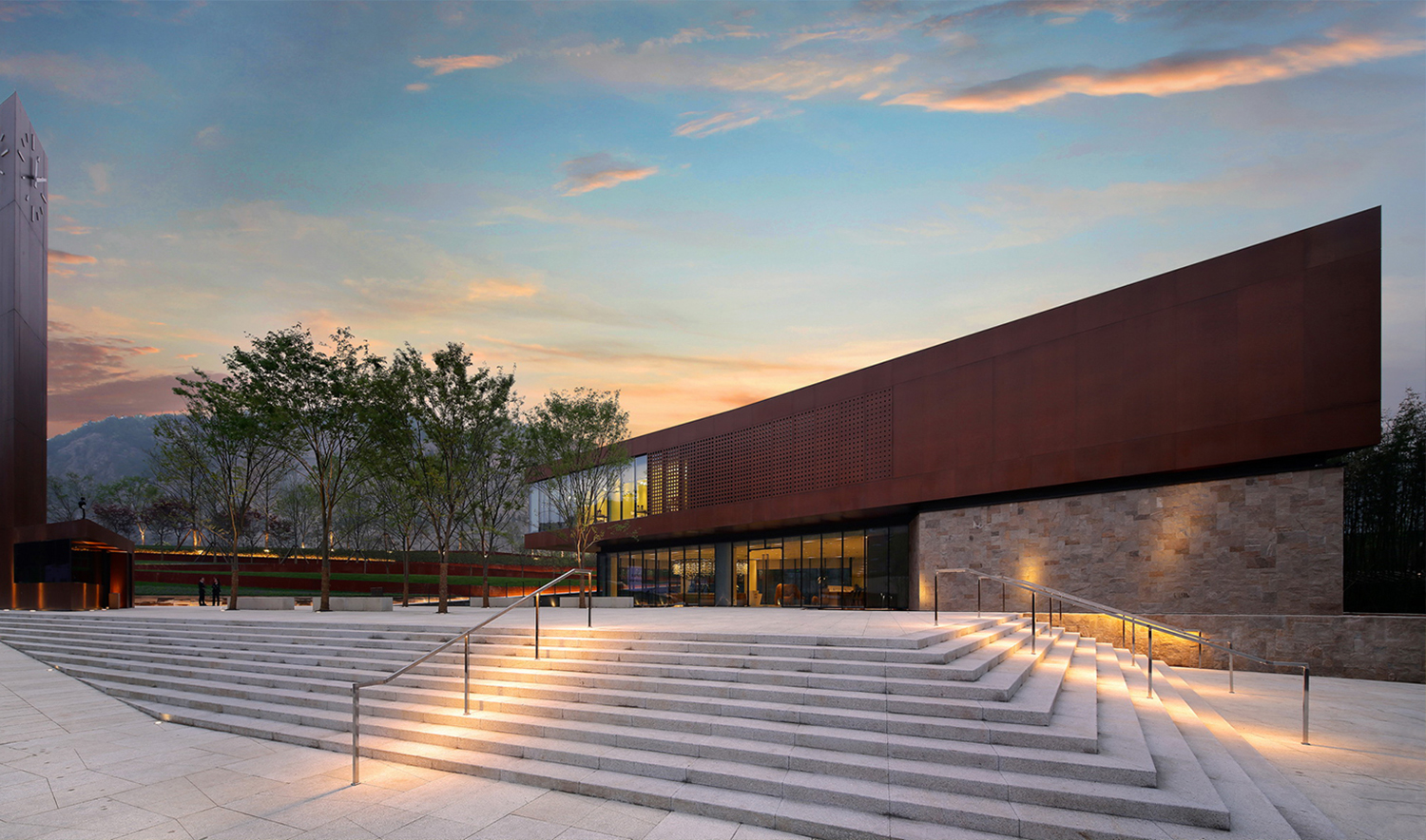
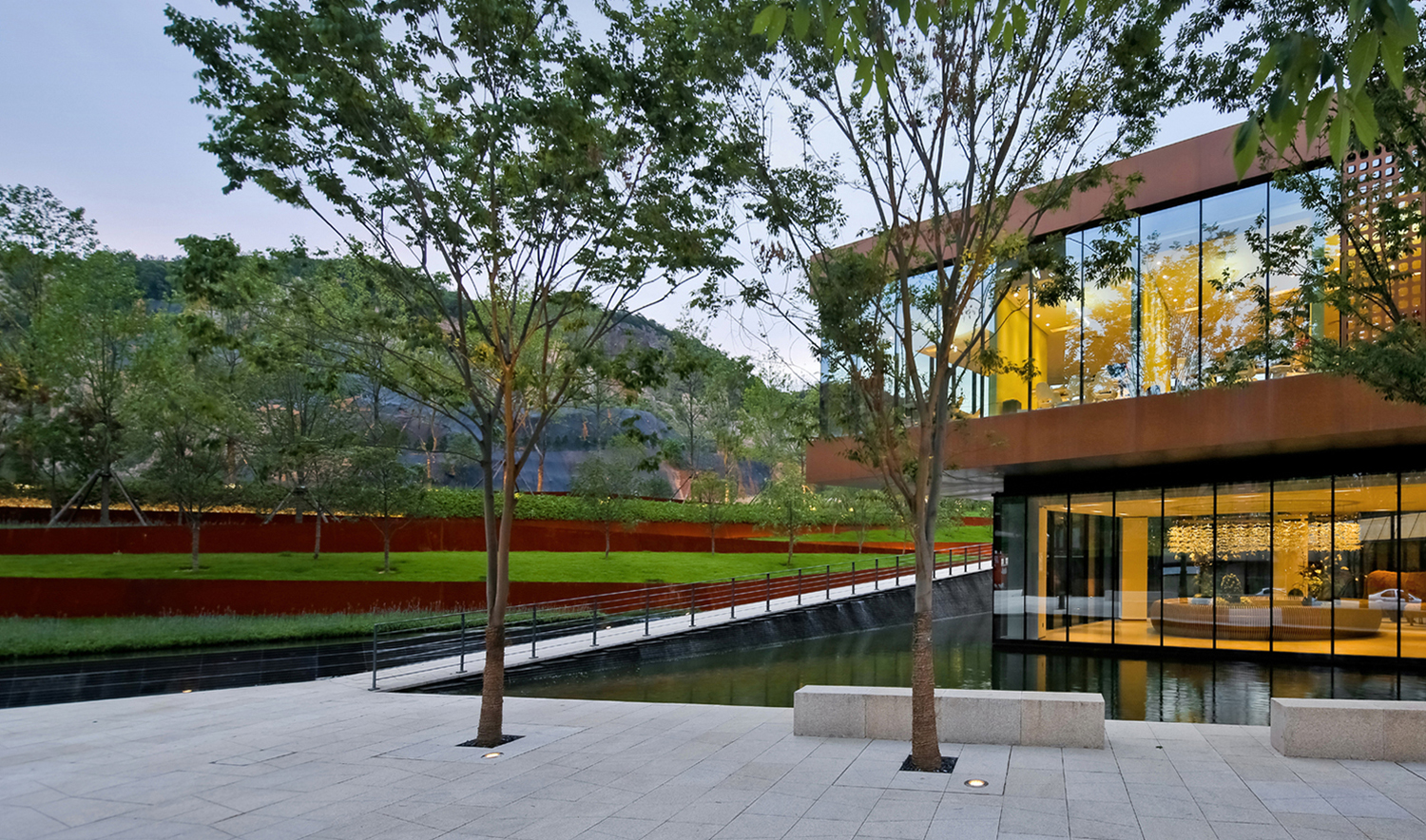
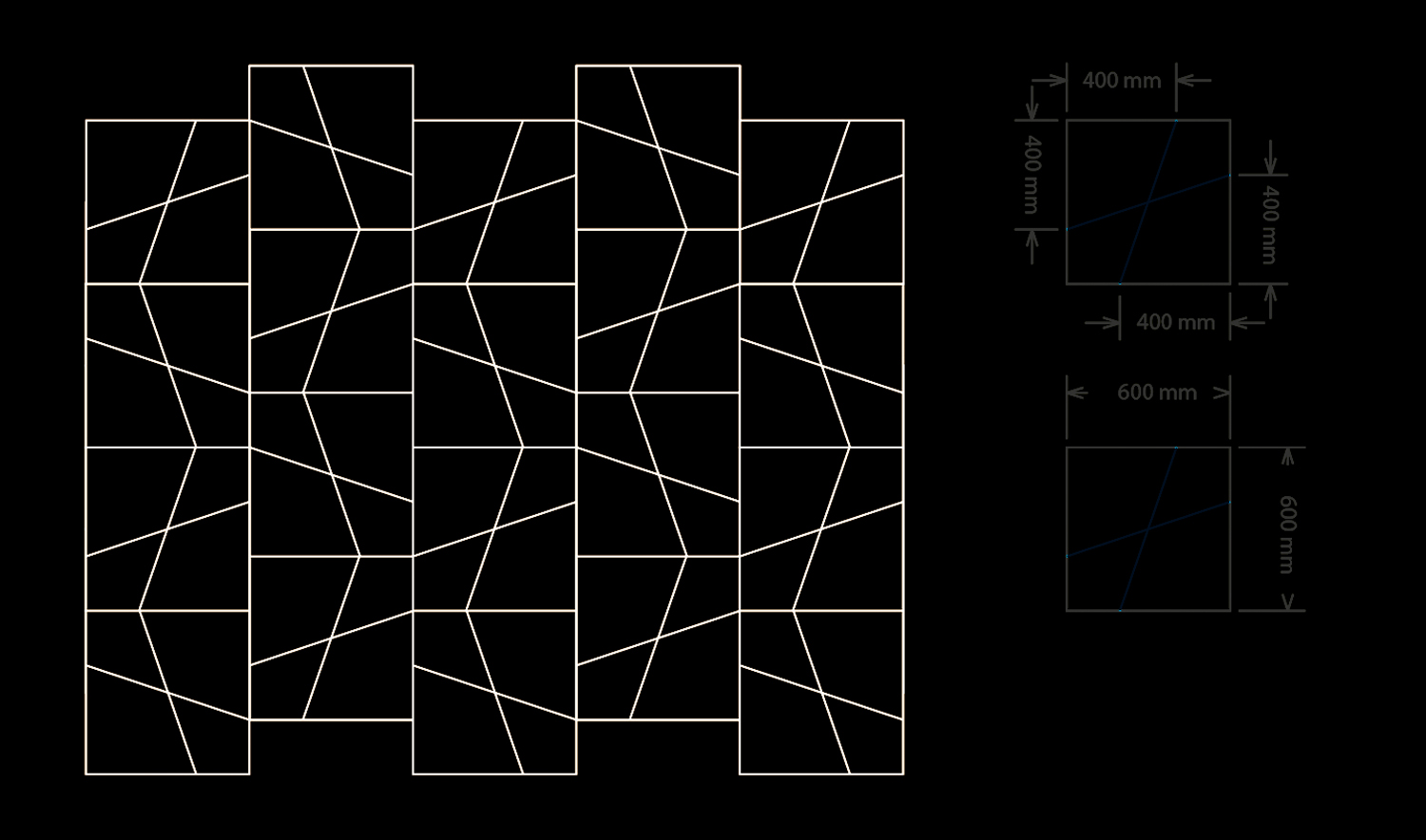

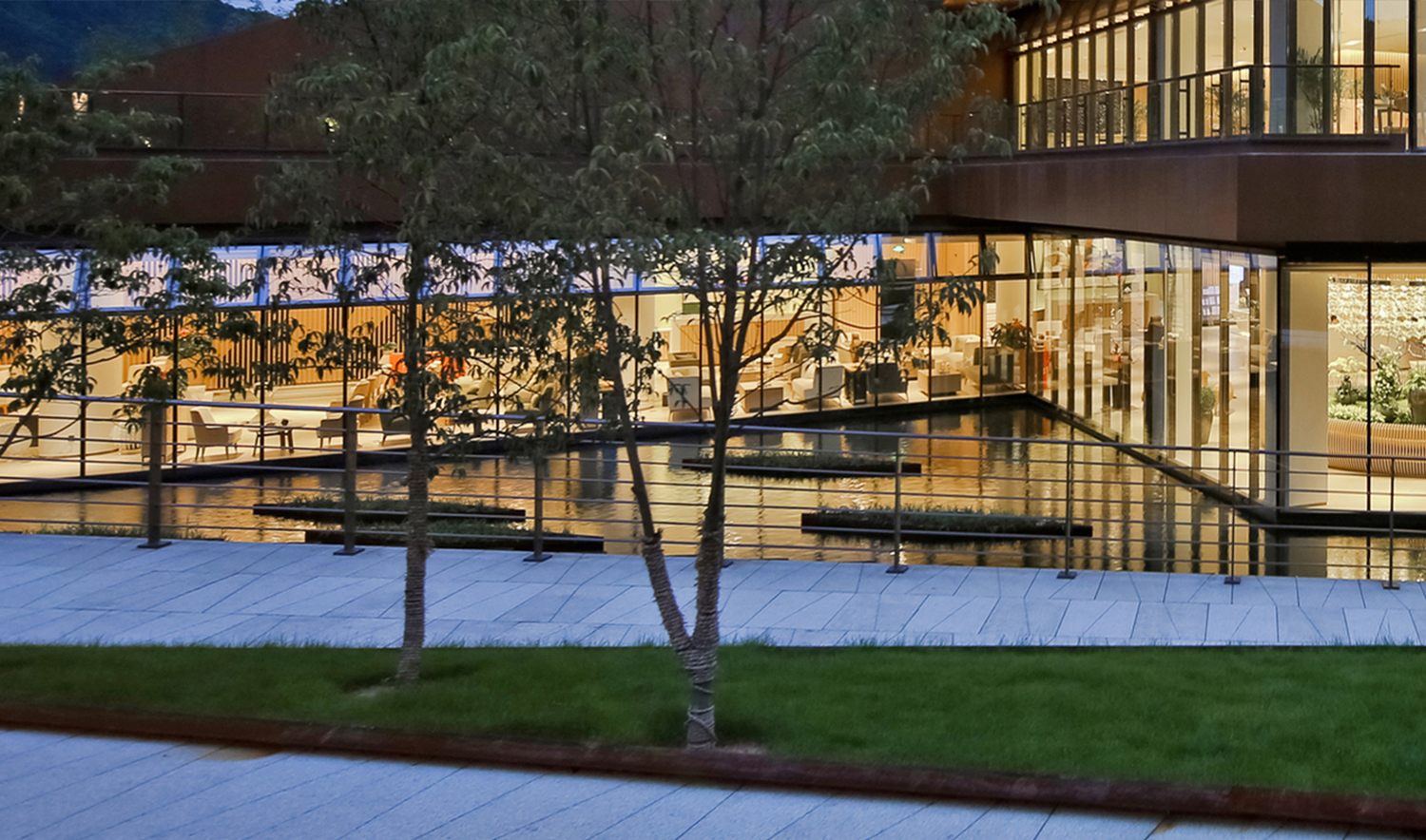
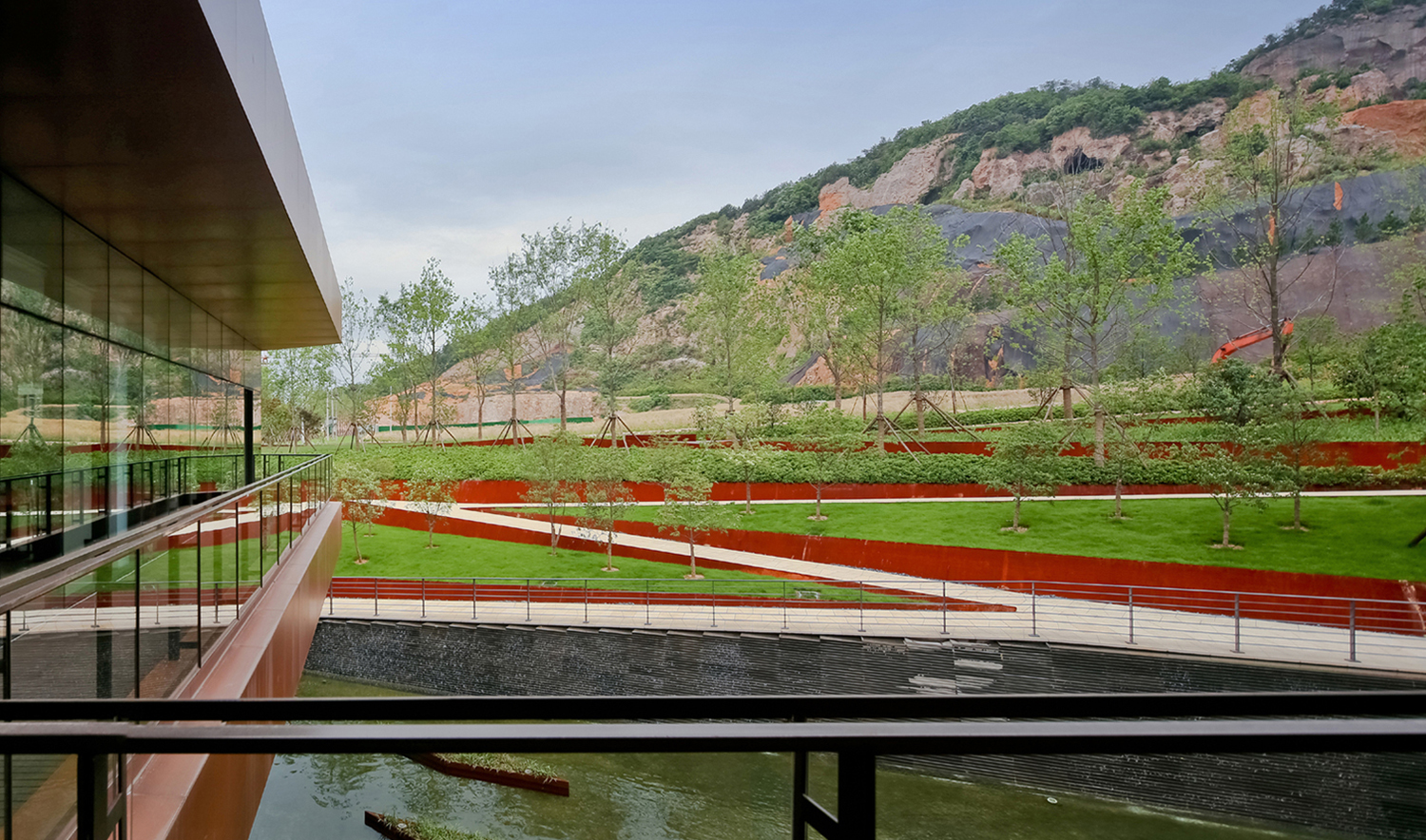

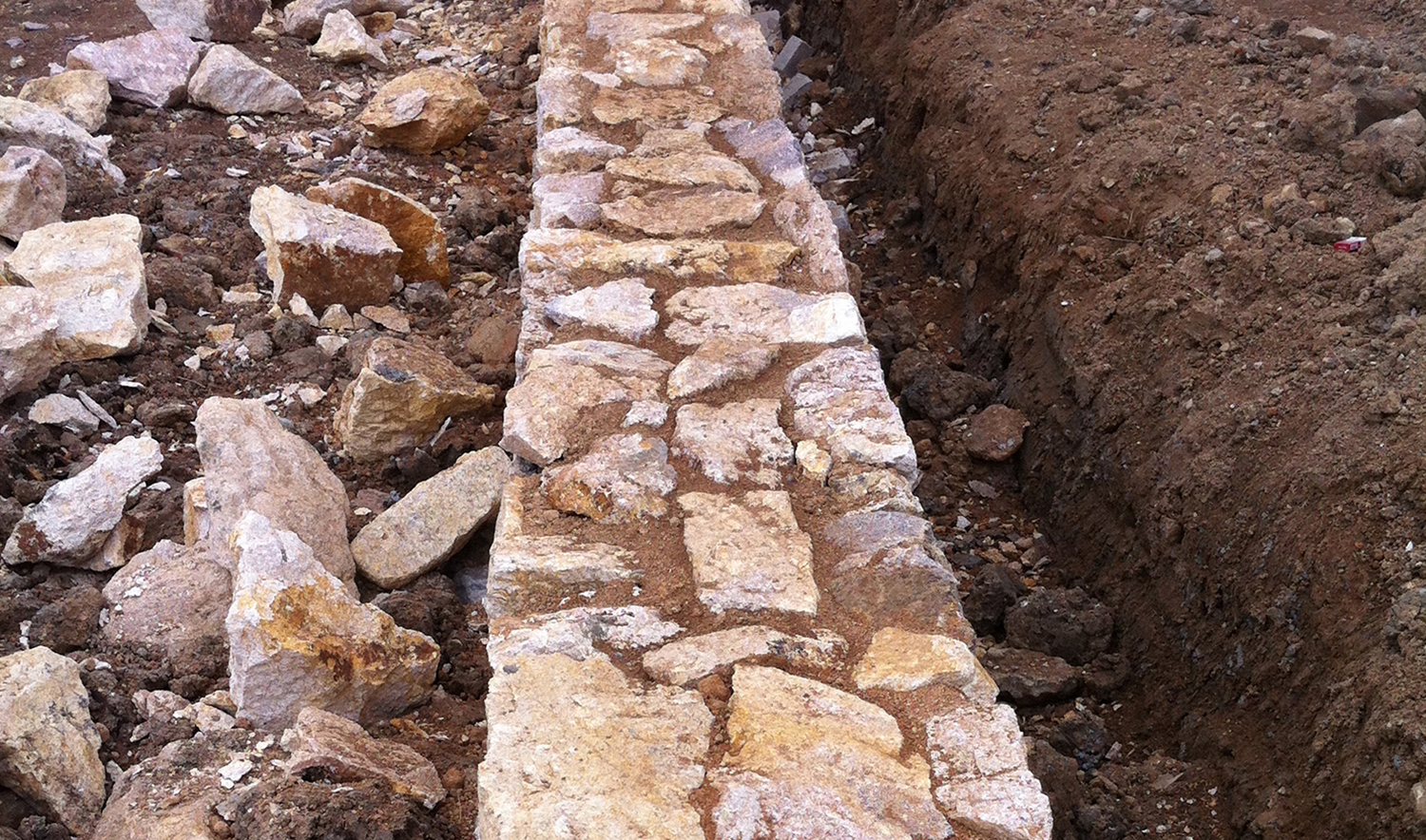
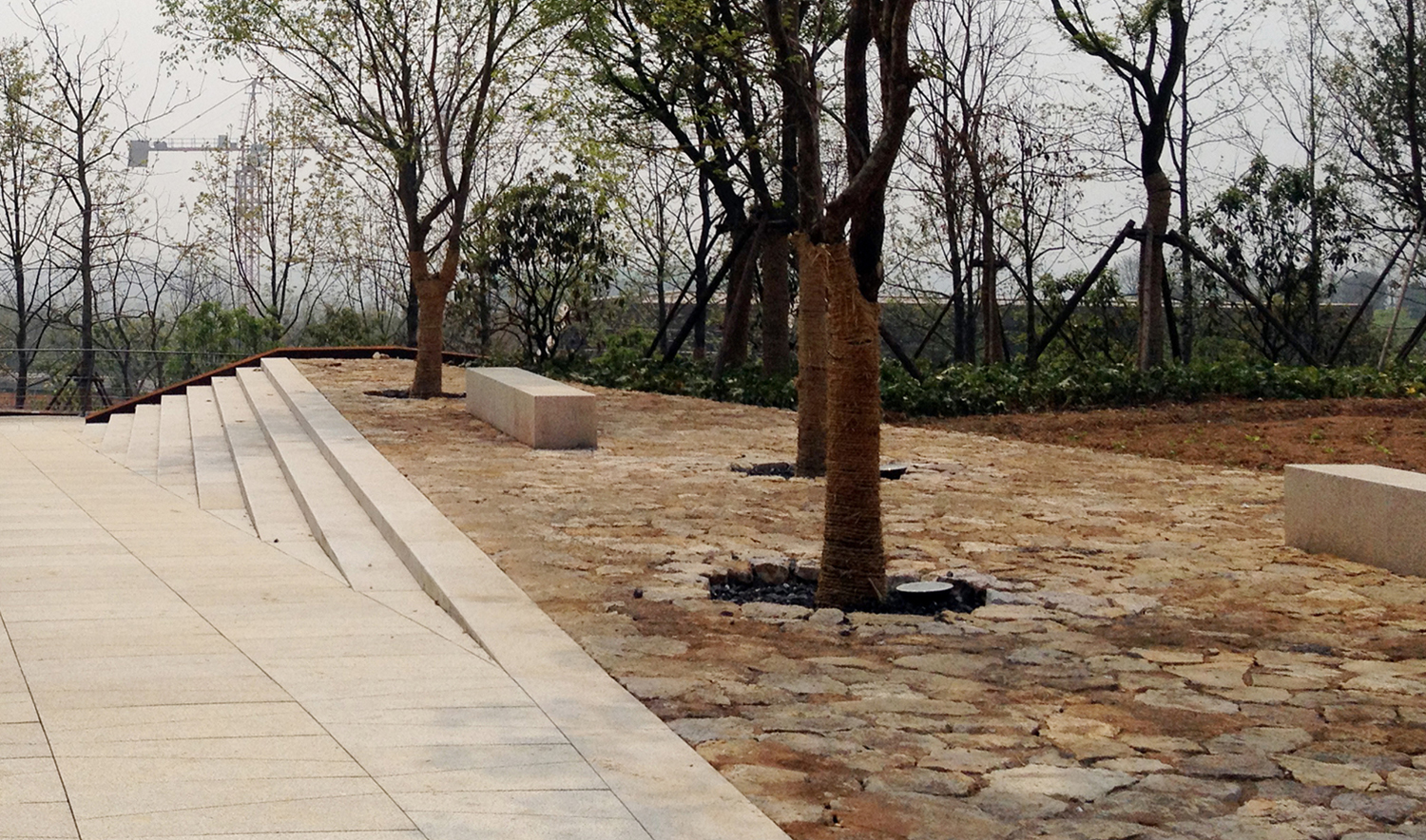
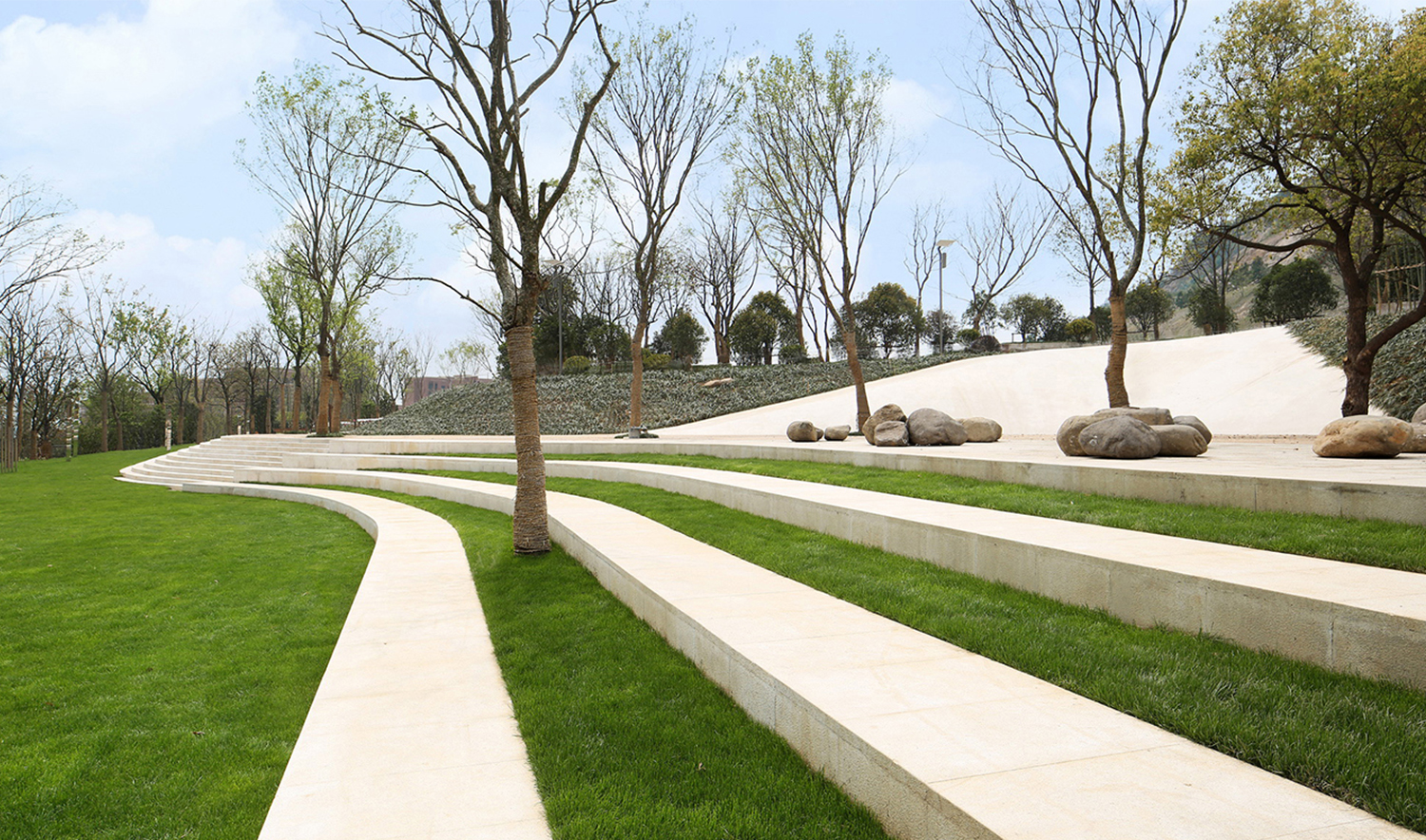
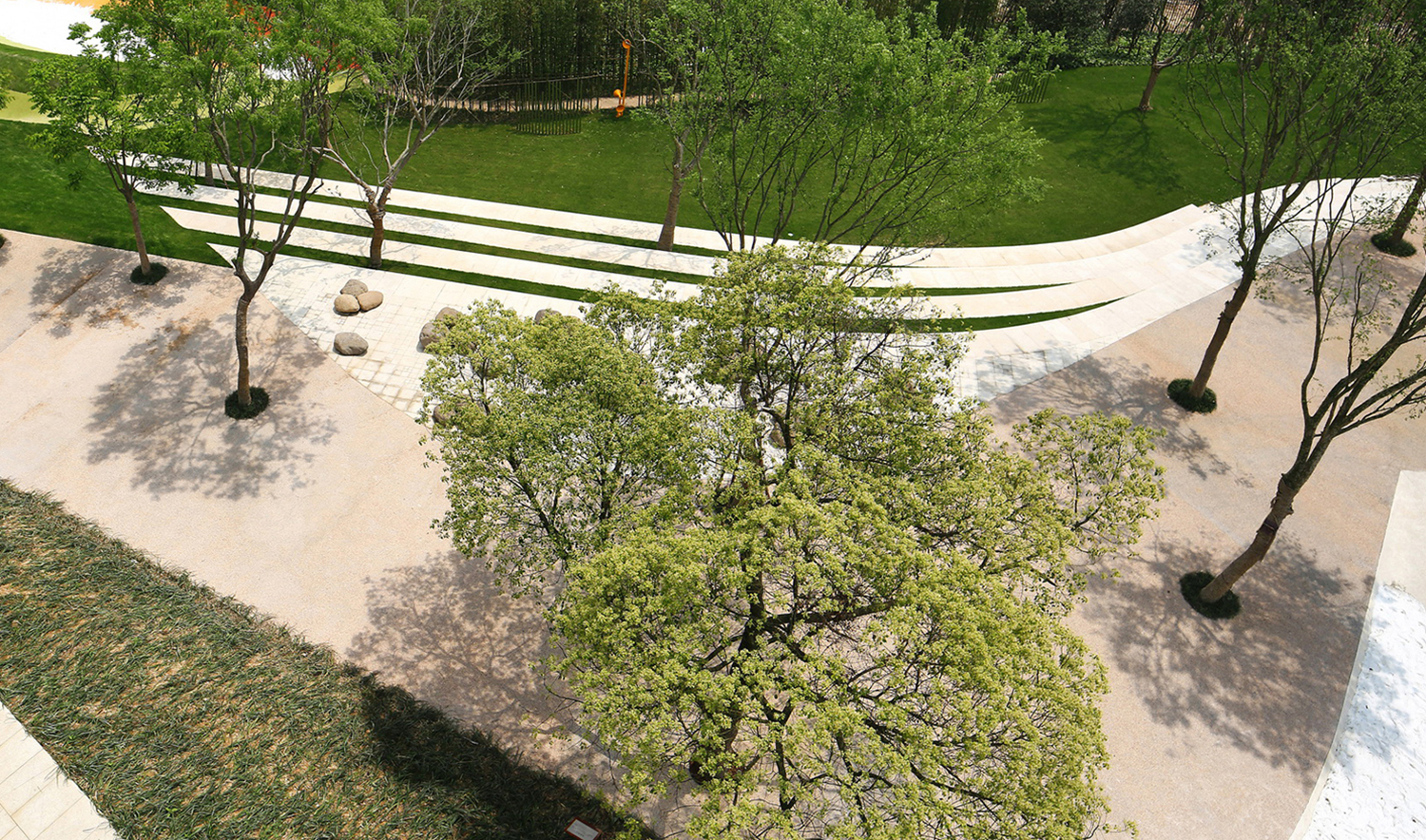
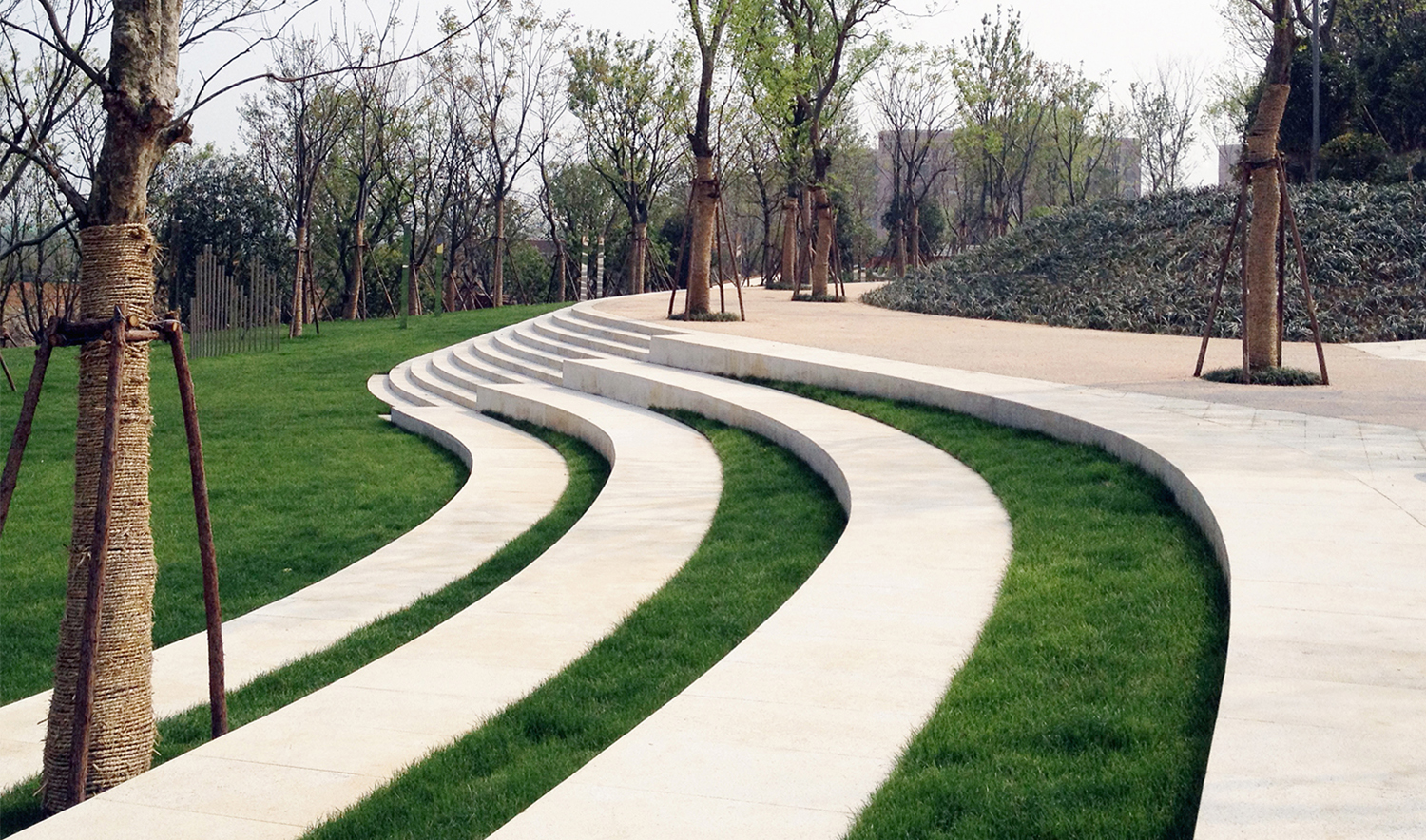

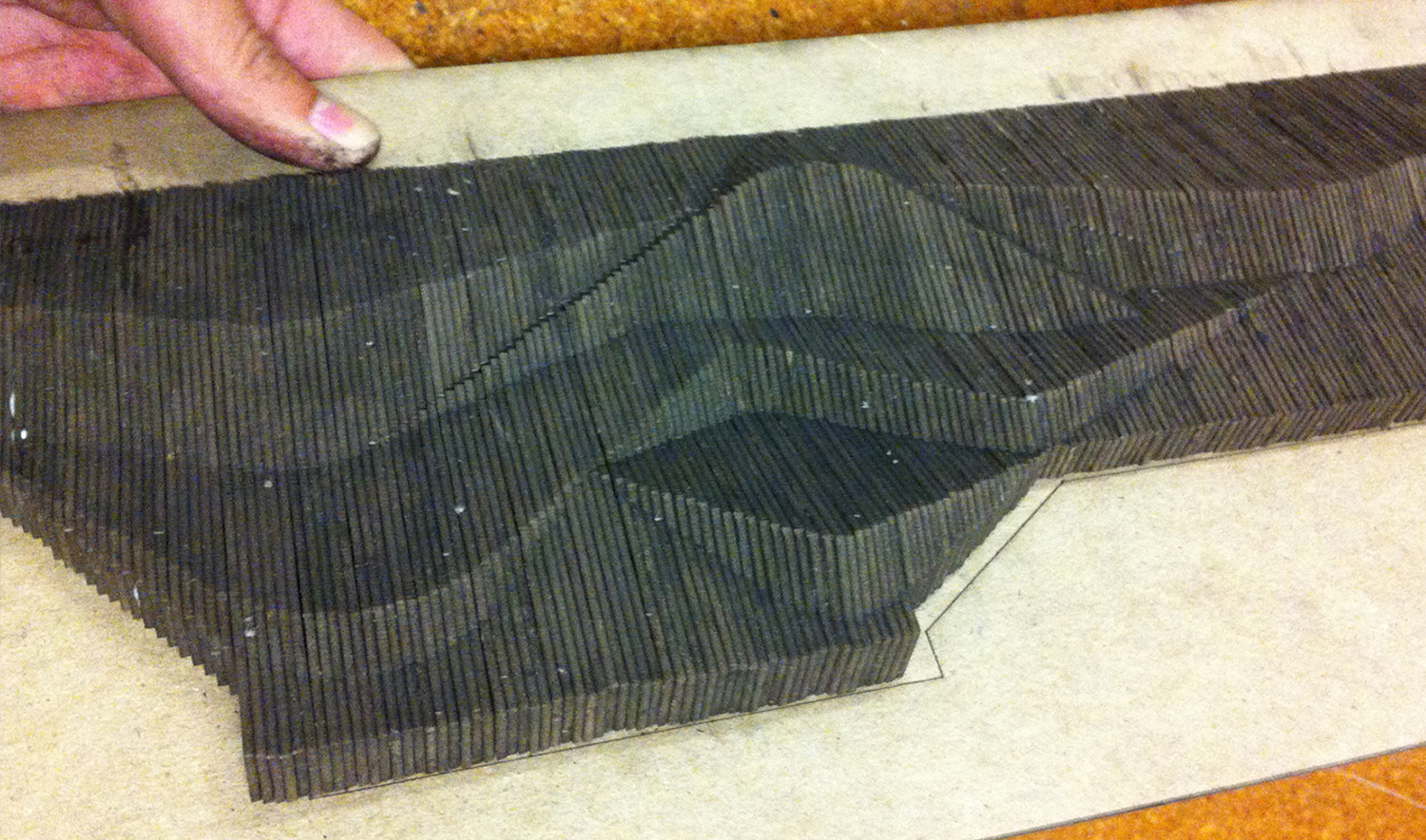
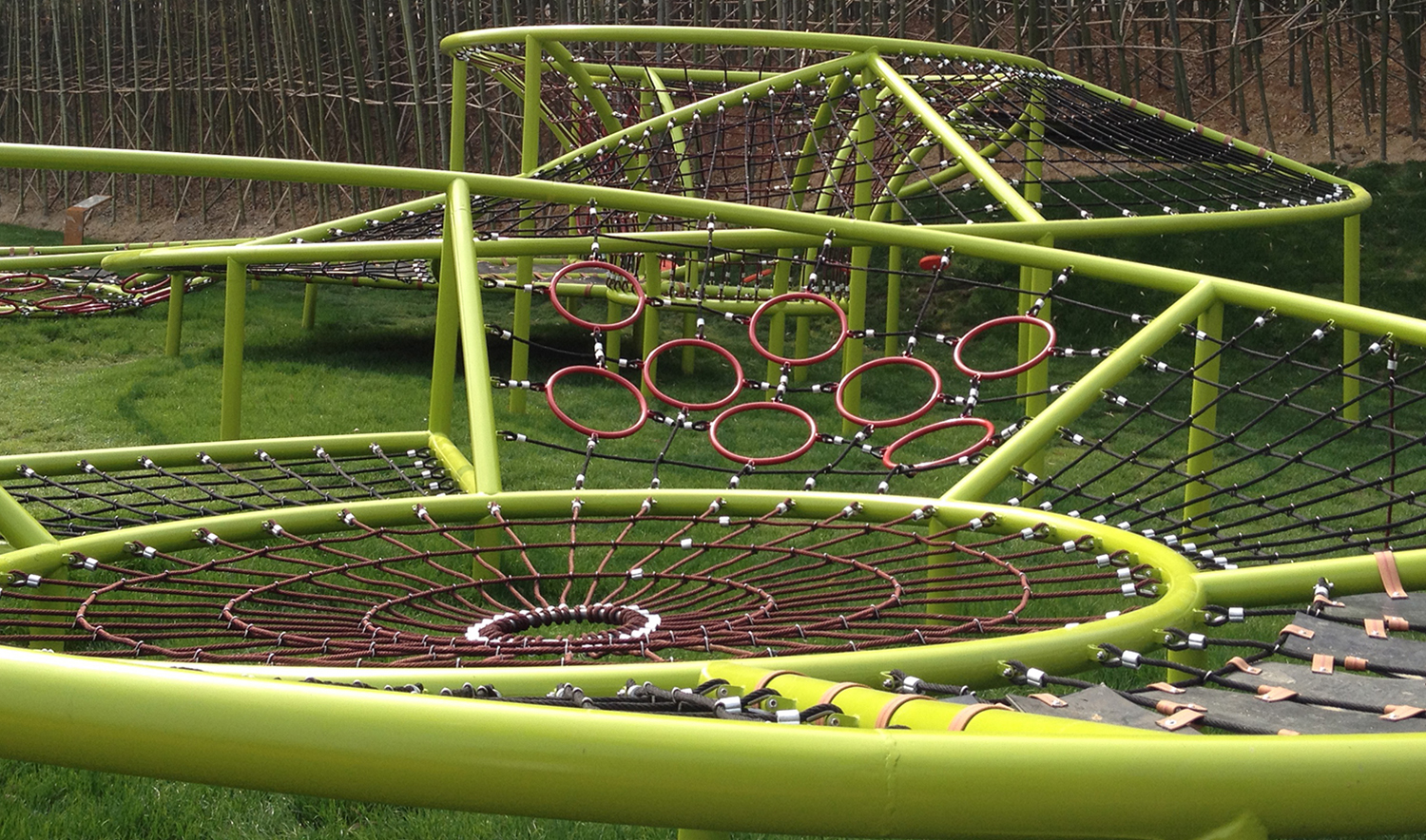
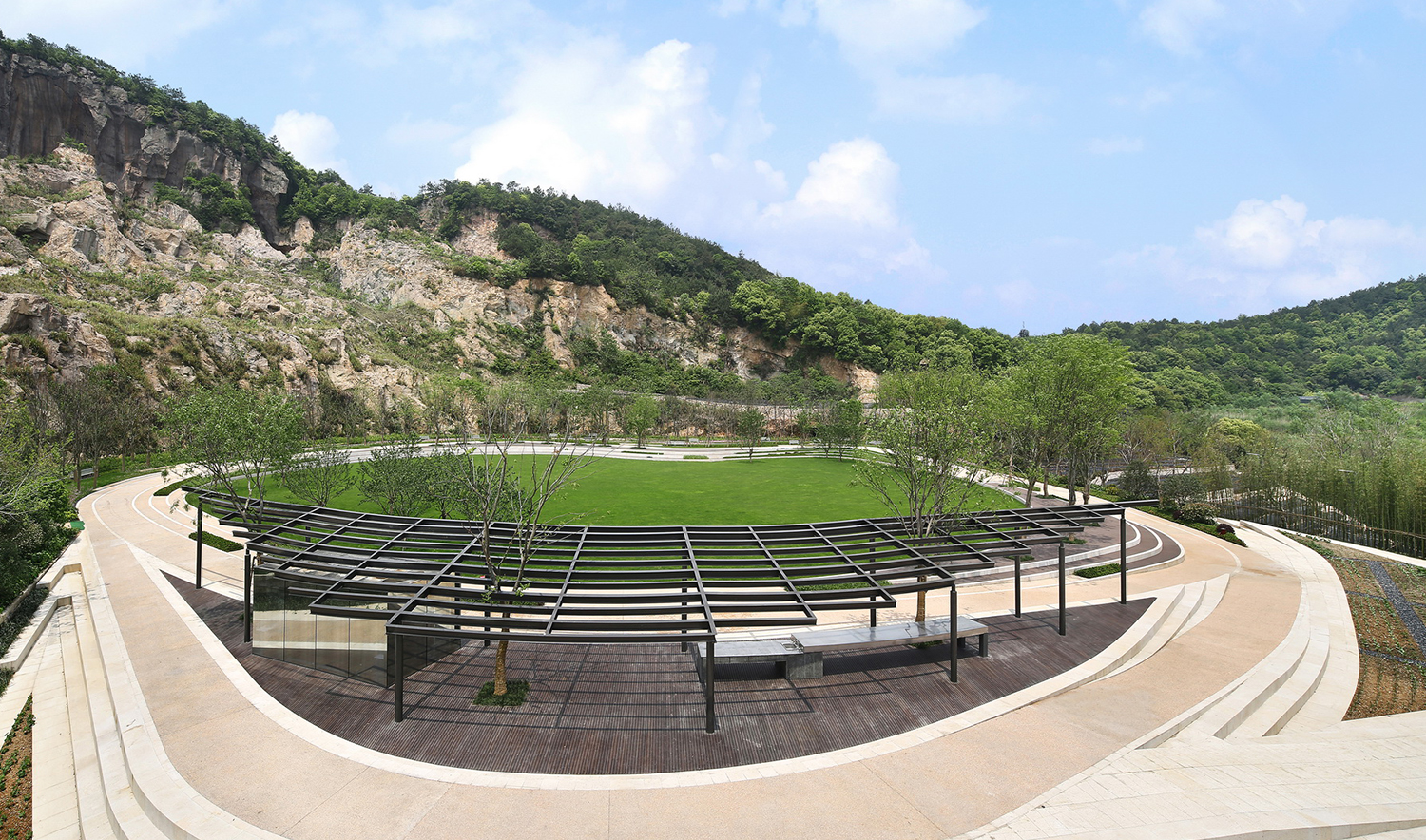

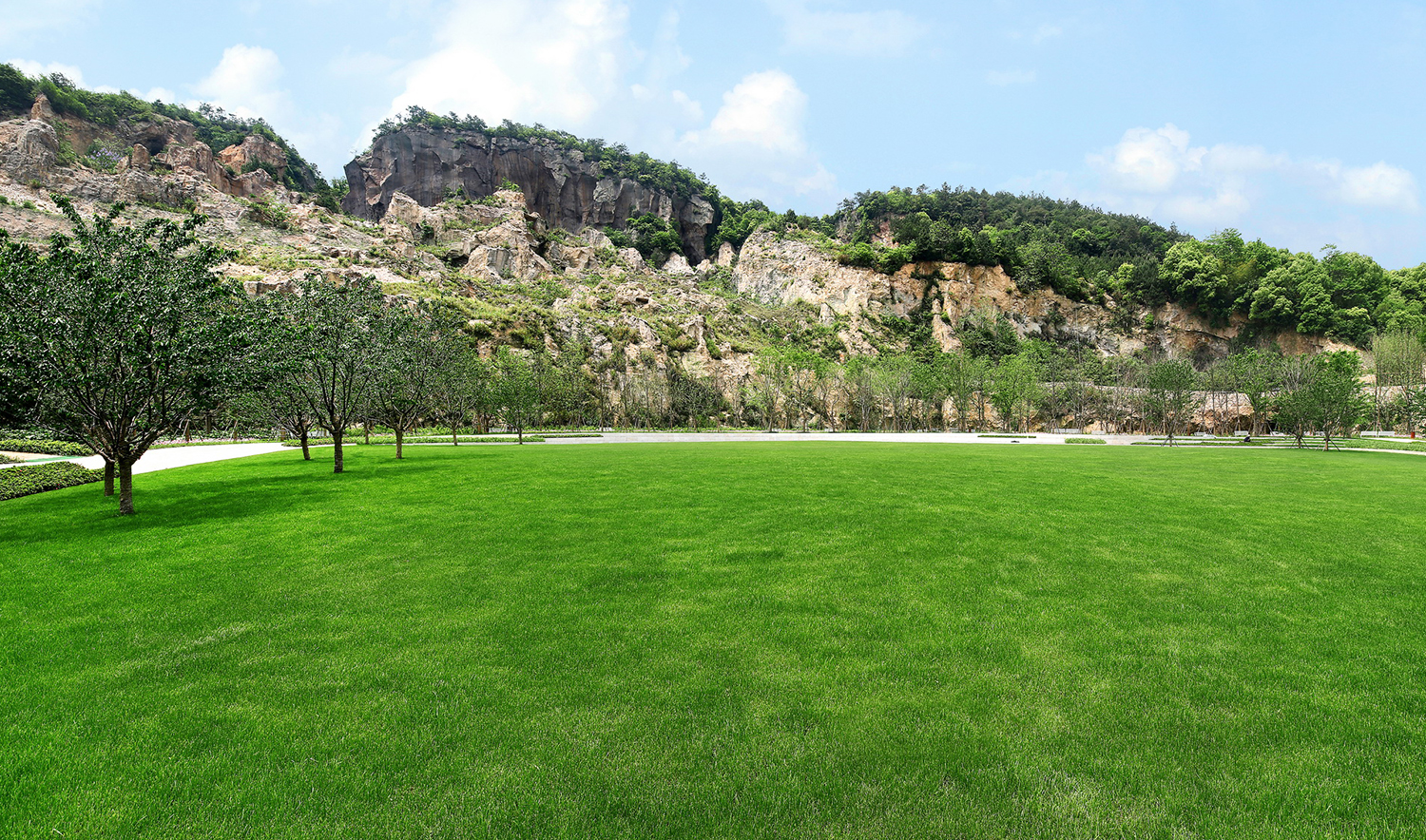
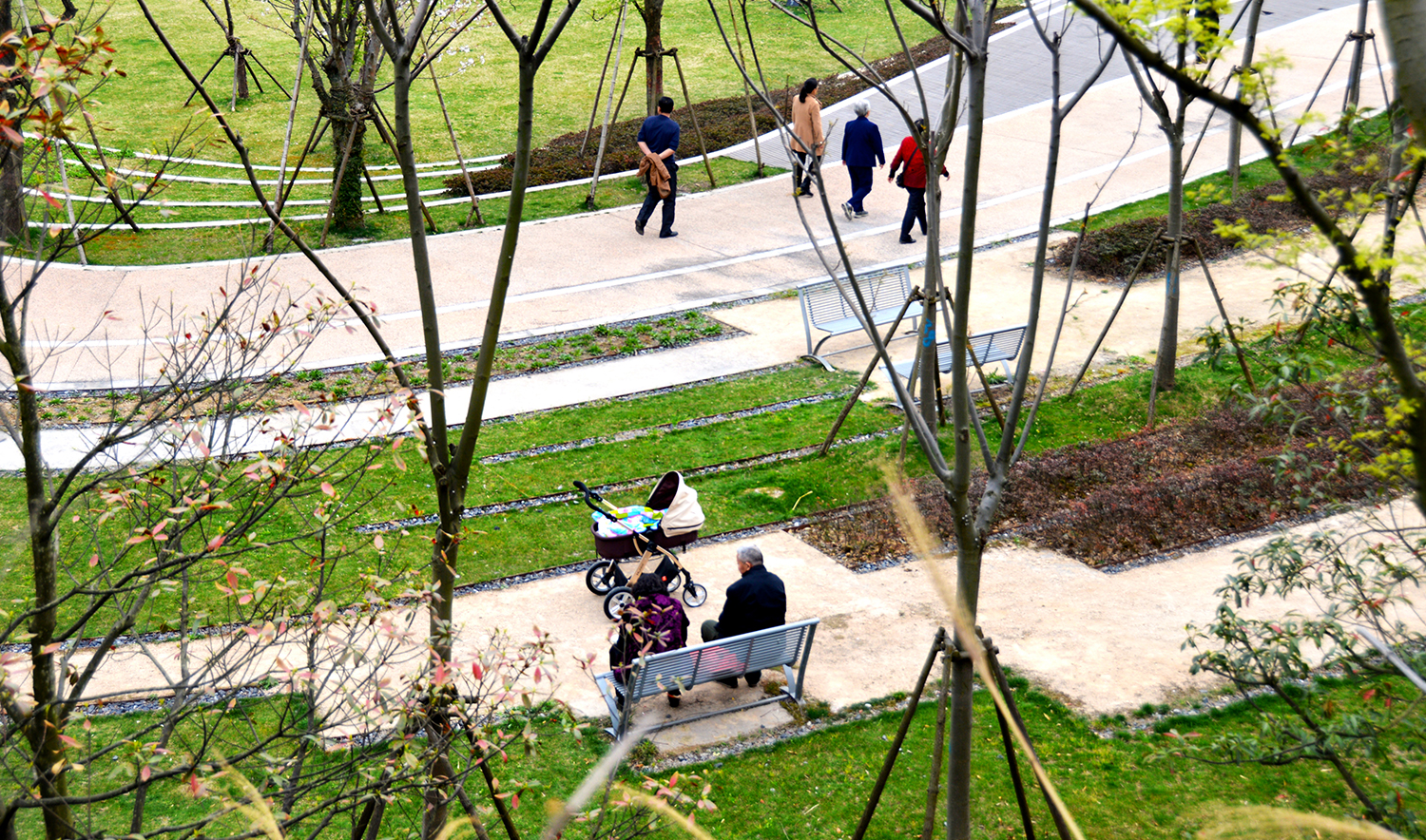
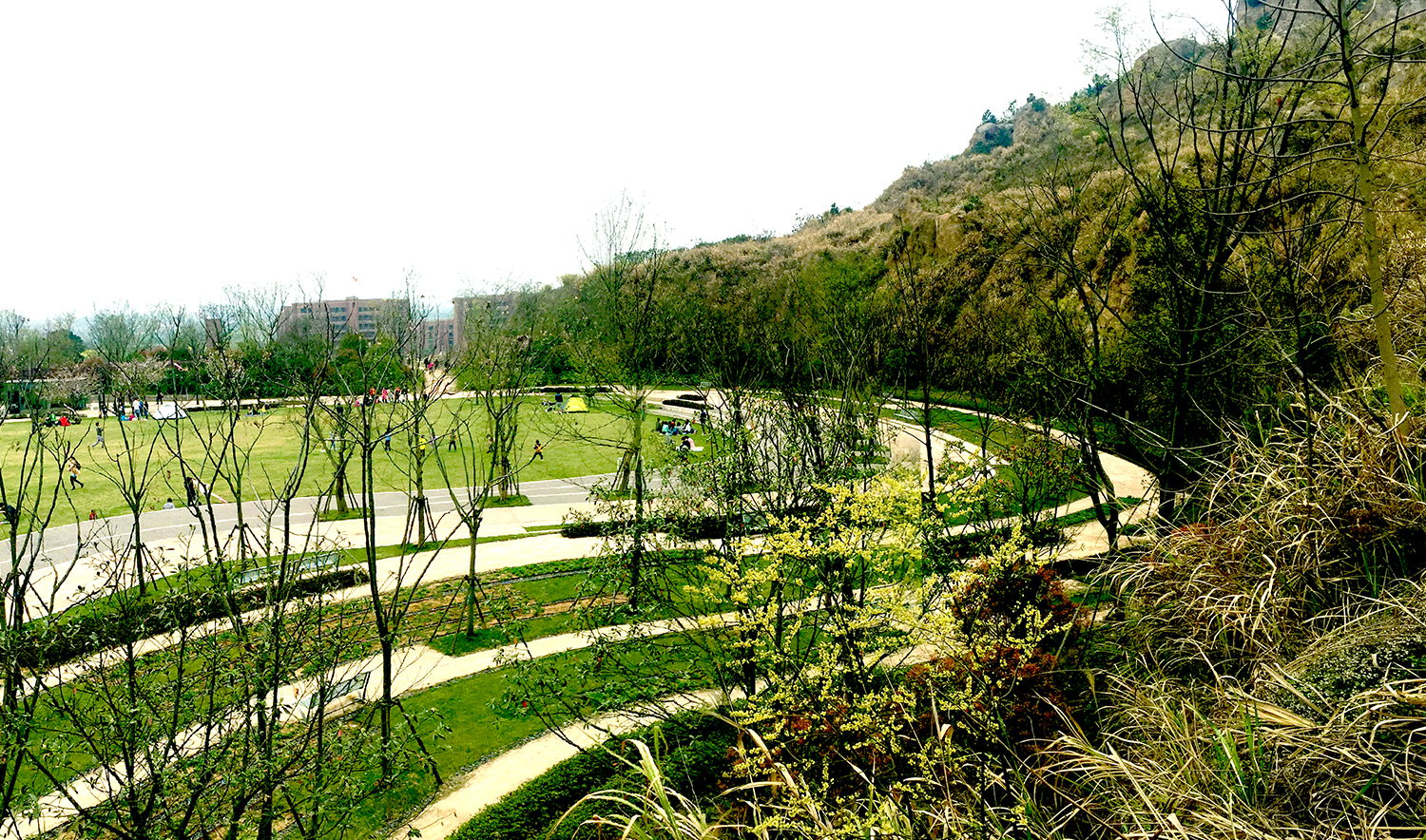
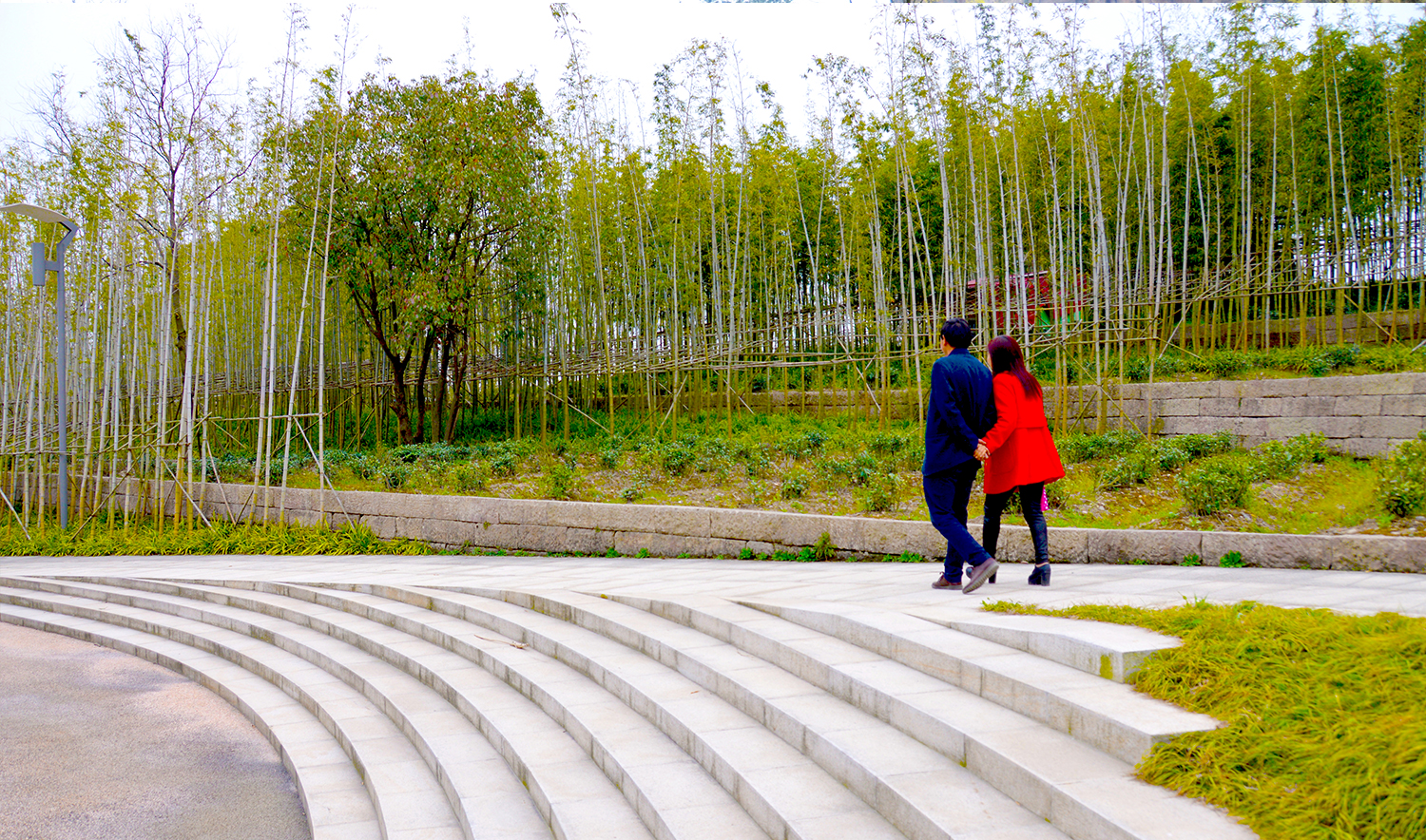

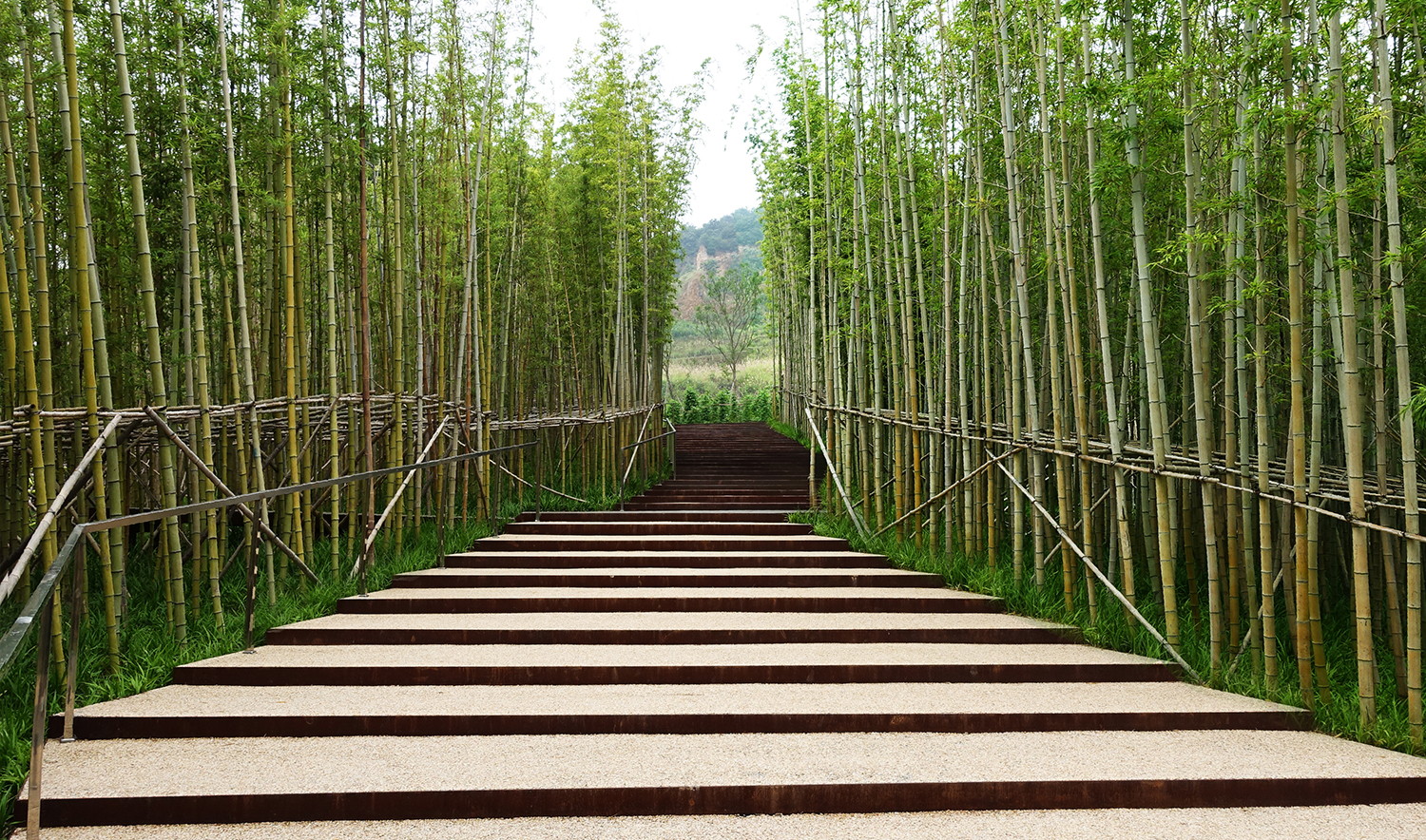
Quarry Park is being developed on a large difficult strip of hillside in-between a newly planned development and a mountainside ravaged by decades of stone quarrying, but with its own eerie beauty. Local government rezoned parts of the abandoned post-industrial (quarry) site next to new residential developments as food production farming zone. Local farmers have started to (we would call them squatters here) grow small garden beds and crops on hand-made terraces and putting pressure on the developer of the adjacent site to rethink about its neighbors (farmers..). Aki Omi’s team of landscape designers was employed by Vanke Hangzhou to brainstorm ideas for the park within the complex physical, cultural and political context of the site and this rapidly changing region of China. Attitudes and relationships within China’s Special Economic Zones (is Hangzhou one of the SEZs? Not sure) are complex and change at a dashing pace. One such change in attitude, a byproduct of urbanization, has been diminishing respect for both farming and farmers, and even home cooking. Now even that recent phenomenon has started to shift back the other way as concerns for food security and health are on the upswing among young sophisticated urbanites; and sophisticated is the word to describe the neighboring residential community known as Liangzhu Cultural Village built by Vanke, with its recycling centers, farmer’s markets and “e-cards” for spending in local shops and accessing neighborhood amenities. Residents are largely white-collar commuters to Hangzhou, their children and retired grandparents looking for a healthy quality of life and connection to rural nature. With the “farm-to-table” movement finding a foothold in certain Chinese resort communities, including nearby Moganshan (www.nakedretreats.cn) an early goal for Quarry Park, set out in the first conceptual design workshop, was to embrace the makeshift farmland, continue to grow food, and to use the finely crafted stone terrace walls as inspiration for further park improvements, thus reconnecting the residents of the new community with a positive image and experience of farming through design and programming. The Park occupies a unique position of in-between; in-between rural and urban, earth and stone, work and leisure, past and future, while remaining open to redefinitions of all those notions.
There are two main anchor portals to the park from the neighboring community, one is the primary public face, the other more resident oriented. From the southeast the public is welcomed through the cultural center and its event terrace. The building, designed collaboratively between architect and landscape architect, can host tasting parties, cooking classes and a host of activities relating to the park’s central agricultural theme. From the cultural center, a series of highly abstracted terraces and ramps lead up to the farmer-built fields above. The lines and patterning of stone walls is abstracted still further using corten steel retaining walls, emphasizing their linear nature over materiality, and highlighting the zigzag pattern as ramps negotiate the slope. Plantings here are permanent or perennial though still focused on fruit-bearing, however the Chinese bias toward extreme tidiness in the landscape is at its most prominent here at the most public entrance to the park. The farmer-built fields remain essentially as is, but Vanke will assume their management as organic farms and aid the farmers with maintenance, crop choices and the marketing of their produce, still another kind of in-between position occupied by the developer. Unlike many parts of the world however, developers in China are often on the forefront of such innovation. (this was a part of our proposal to Vanke. I am kind of interested in telling the story of designers who come in between these issues. We now design not only the physical space but also how these physical spaces could be operated which will result in new programs or spaces. … make sense?? Our role is redefining as we put ourselves in-between the issues surroudnig the projects..)
Just north of the community center, nestled into the hillside, is a large adventure play area with an amphitheater, custom designed play structures and a terrazzo slide built directly into the slope. The primary resident’s gate at the park’s northeast corner leads to a grand staircase that meanders up the hillside through a dense bamboo forest. At the top is a large event lawn, which retains the remnant shape left by the quarry work. Surrounded by terraced strolling flower gardens, the event lawn is large enough to host community festivals and includes outdoor kitchen and cooking classroom facilities. The higher arable ground in the park is reserved for the bold geometric pattern of tea plantations with curated tea houses dotting the hillside. Higher still up the mountainside, the development of a “stone park” will take full advantage of the quarry setting as background, media and subject matter for art along a scenic trail. Some remaining elements of the stone quarry are treated as art by introducing a neutral planar surface as backdrop to unusual remnant outcroppings while also creating overlooks to the fields and gardens below, enhancing both scene and experience and allowing for rotating installations. In every possible way Quarry Park builds on the philosophies underlying the development of Vanke’s Liangzhu Cultural Village of artful, healthful living by reconnecting residents and visitors to the essentials of feeding body, mind and spirit.
by Steve Hanson